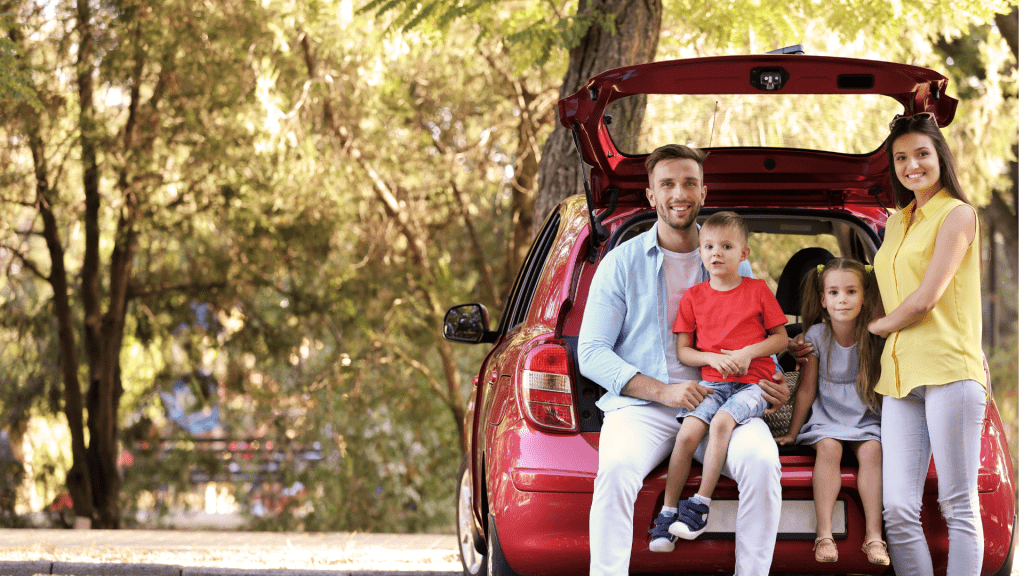
Between school drop-offs, weekend sporting events, and the occasional road trip to the in-laws – your family car is put to work on a daily basis. And with the newest car models loaded with improved safety features, comfier interiors and some surprisingly smart tech, it’s easy to start asking: is it time to upgrade your family car?
The truth is, a car is more than just a way to get from A to B, especially when tiny humans are involved. Safety immediately becomes non-negotiable. And it must be said – anything that could save you from bickering kids in the back seat (oh, hey, rear-seat entertainment systems) is also worth considering.
But buying a new car isn’t as simple as picking the prettiest model and signing on the dotted line, especially when you’re working within a fixed budget. This is where asking yourself the right questions can help you make a solid, well-thought-out choice.
Here are all the questions you should ask yourself to buy your next family car with confidence.
-
Can I Afford This Without Overstretching My Budget?
Before you start test driving shiny SUVs and seven-seaters, you’ll want to define your budget to avoid overspending. You don’t want to fall in love with a car only to realise you’ll be living off 2 minute noodles just to cover the monthly repayments.
This is where competitive car loans come into play. Rather than being boxed into a basic car that is dictated by budget, families can explore financing deals that include lower interest rates and favourable terms. This means you could potentially drive away in a car that has everything you’re looking for from a safety and features perspective. That’s especially important if you’ve got young kids in tow and want those newer features like lane assist, rear cross-traffic alert, or built-in child seat anchors. Vehicle finance with reasonable terms ensures you don’t have to choose between safety or comfort, and can keep your new car investment sustainable and in alignment with your household budget.
But remember: it’s not just about whether you can afford that brand new car, and more of whether you should. Even with decent financing, are you going to struggle to make your monthly payments? If the answer is ‘yes’, perhaps it’s a better idea to look into second-hand options or an older model. Some dealerships and finance firms may even offer car loans for second-hand vehicles. Just have a shop around to see what options are available to you, and run the numbers to make sure you select an option that supports your family’s monthly budget.
Pro tip: If you do decide to buy a second-hand vehicle, consider investing in a professional vehicle inspection prior to making your purchase. Pre-purchase inspections for second-hand vehicles can help you catch potentially costly faults before you sign any paperwork.
-
What Does My Family Actually Need in a Car?
Naturally, cars with more features tend to come with higher price points. And whilst some features (like ABS braking and other safety features) are worth budgeting for, others may be less of a priority for your family.
Heated seats? Fun to use, although perhaps not necessary if you live somewhere warm. Panoramic sunroof? It looks great but how often are you really going to use it? Instead, consider how, exactly, your family uses a car on a day-to-day basis. Do you need space for a pram, scooters, a week’s worth of groceries and the family dog? Are you planning on embarking on long road trips, where built-in navigation and additional legroom will come in handy? Or do you mostly need something compact for school runs and errands around town?
Also consider how long you plan to keep this car. If you’ve got a growing family – or are already cramming three kids in the backseat – chances are you want something with a bit of future-proofing. A decent-sized boot, sliding doors and plenty of USB ports for everyone’s gadgets aren’t just luxury extras. They really do make life that much easier when you’ve got a couple of bored kids in the backseat on your next family road trip.
-
How Important Are Safety Ratings and Features?
When you have little passengers on board, safety is an entirely different conversation. The old hatchback you drove alone in your twenties may have served you well, but family life demands greater protection.
Consider cars that have good ANCAP (Australasian New Car Assessment Program) crash test ratings. Five stars should be considered the bare minimum for safety-conscious parents.
But beyond the rating, dig into what specific features the car includes. We’re talking about blind spot monitoring, adaptive cruise control, autonomous emergency braking, rear-view camera territory – all things that make a massive difference when dealing with school traffic or reversing out of a busy school carpark.
Side note: sometimes the safest choice isn’t the flashiest. A reliable, sturdy SUV with strong crash-test results might not turn heads, but it’s going to give you peace of mind every time you hit the road. Explore the safest cars to buy in Australia here.
-
What’s the Long-Term Cost of Ownership?
It’s not just the upfront price of your selected vehicle that you need to consider. Fuel economy, maintenance costs, insurance premiums and even resale value should also be part of your evaluation when buying a new family car. That car that looks like such a bargain right now could eventually lead to thousands spent on maintenance costs down the line, so do your research and choose wisely.
Hybrid and electric cars are also worth a look, especially with petrol prices creeping up. Although they can be more expensive to buy initially, they frequently pay off after a while thanks to their lower running and servicing costs. And, depending on where you live, there may be government incentives or tax breaks that make the switch more affordable.
Also, check how often the car needs servicing and how expensive the parts are. Some brands are notoriously pricier when it comes to basic upkeep. A quick bit of research now can save you from nasty surprises down the track.
-
How Will This Fit Into My Lifestyle — Not Just My Driveway?
Let’s not kid ourselves: the dream family car isn’t just practical. It needs to vibe with your life. Do you spend your weekends hitting the beach or escaping to the bush? Maybe you need a bit of off-road capability. Do you do heaps of city driving? Then a smaller SUV or even a hatchback might be more your style.
Remember to think about the little things, too. For example, are those fabric seats going to end up soiled when your kids inevitably spill their drinks on it? Is the backseat comfortable enough for adults to stretch out? These might seem like minor details, but when you’re using this car every single day, they start to matter a lot.
And if you plan to turn this car into your rolling office – whether you’re running a side hustle, shuttling your kids to 10 different activities or hitting school pick-up runs between meetings – then having the right mix of connectivity, storage, and comfort can seriously up your quality of life.
-
Have I Considered the Best Time to Buy?
Timing can play a big role in how much you end up paying and how many extras you can negotiate. In Australia, you’ll find some of the biggest discounts around the end-of-financial year (EOFY) sales in June and new model rollouts (October to December). These periods are golden opportunities to snag a better price or get upgrades like tinted windows, floor mats, or even extended warranties thrown in.
If you’re not in a hurry, it can make sense to wait until these high-value windows roll around. On the other hand, if your current car is hanging on by a thread and the air-con has bitten the dust, purchasing as soon as you can is possibly worth more than saving a few hundred dollars a few months down the line. Just know that walking into a dealership with a bit of research (and at the right time of year) can make a big difference to your final deal.
Wrapping Things Up
Upgrading your family car is a big move, and it’s okay to take your time. There’s no need to rush the process or feel pressured by the latest sales. The best choice is one that works for your life, your budget, and your long-term plans.
Ask the right questions now, and you’ll save yourself the regrets (and possibly a ton of repair bills) later. Whether it’s all about the safety, the space, or cutting-edge new features, choose a family car that works for YOUR family. Trends come and go, but a car that fits your lifestyle will serve you every single day.
Is Car Rental Better for East Coast Holidays: Exploring Your Travel Options








